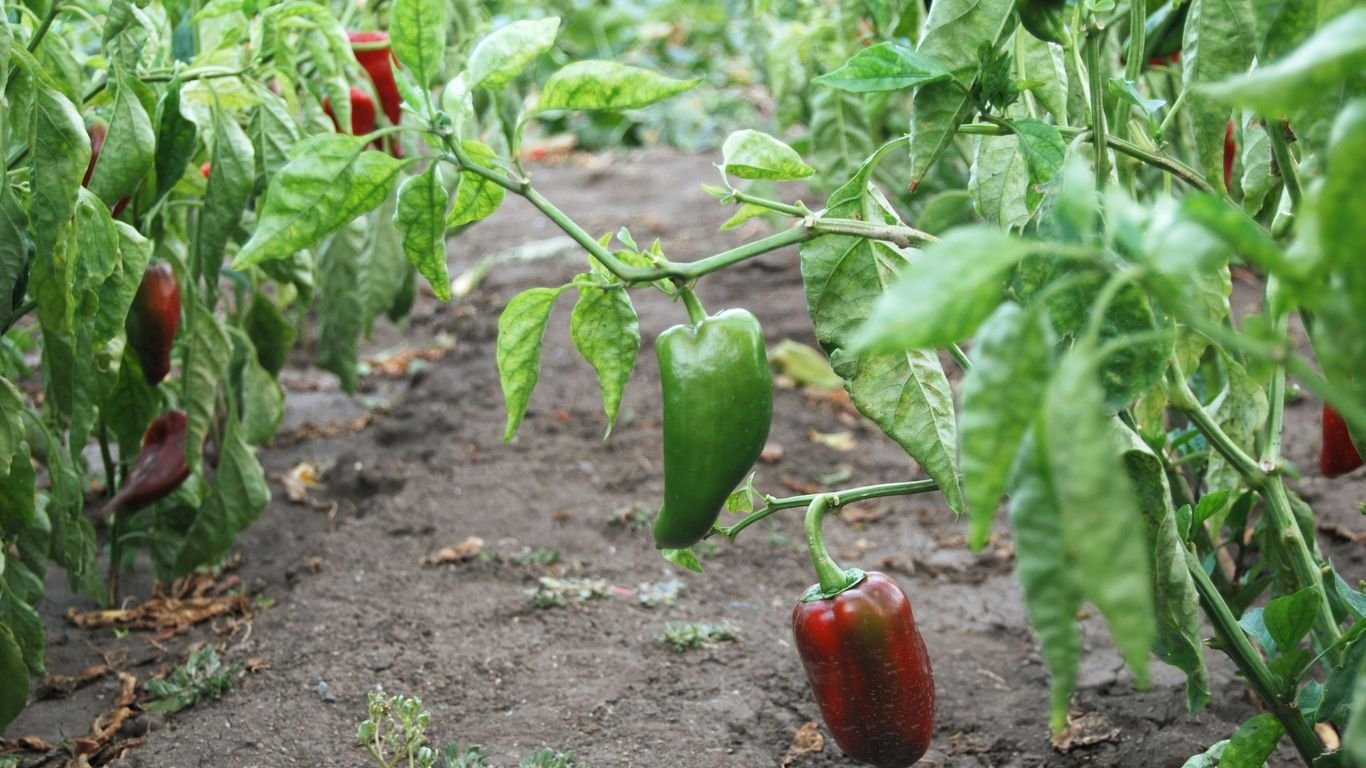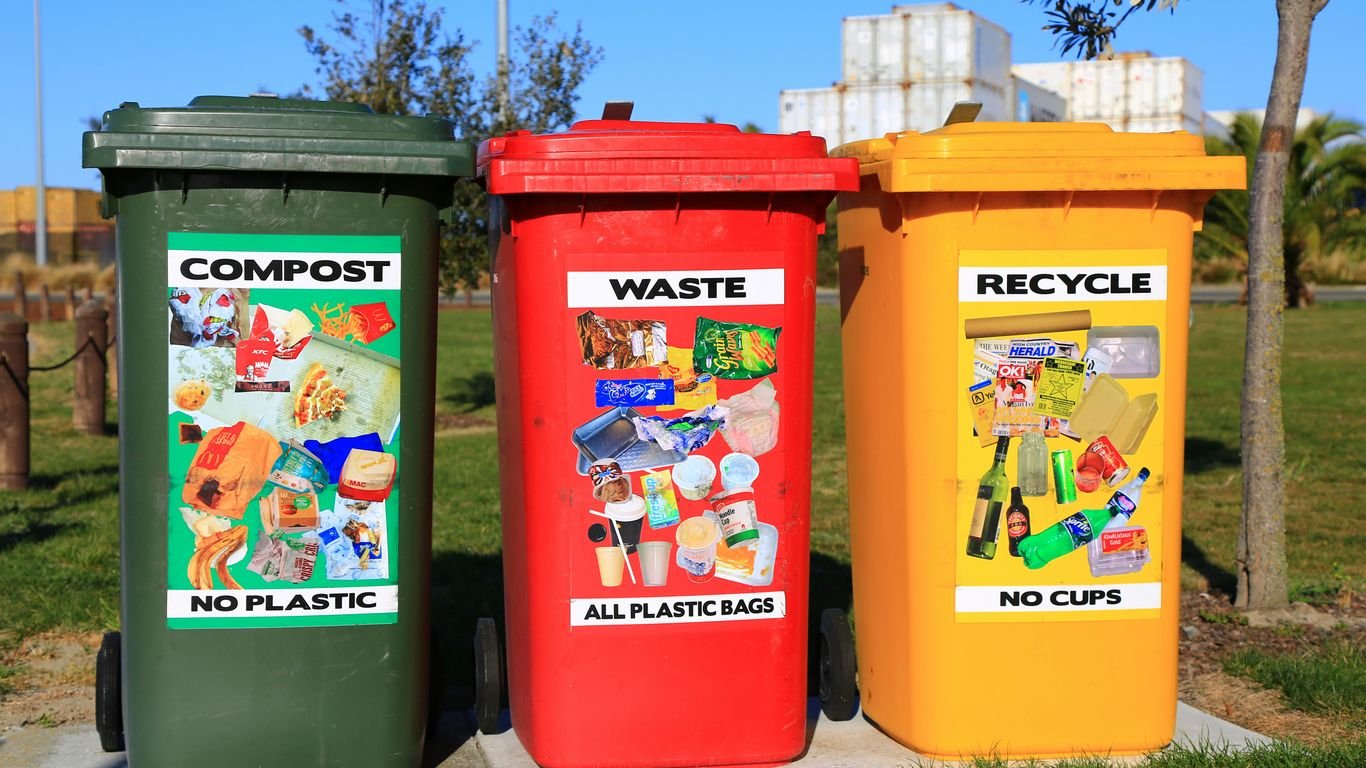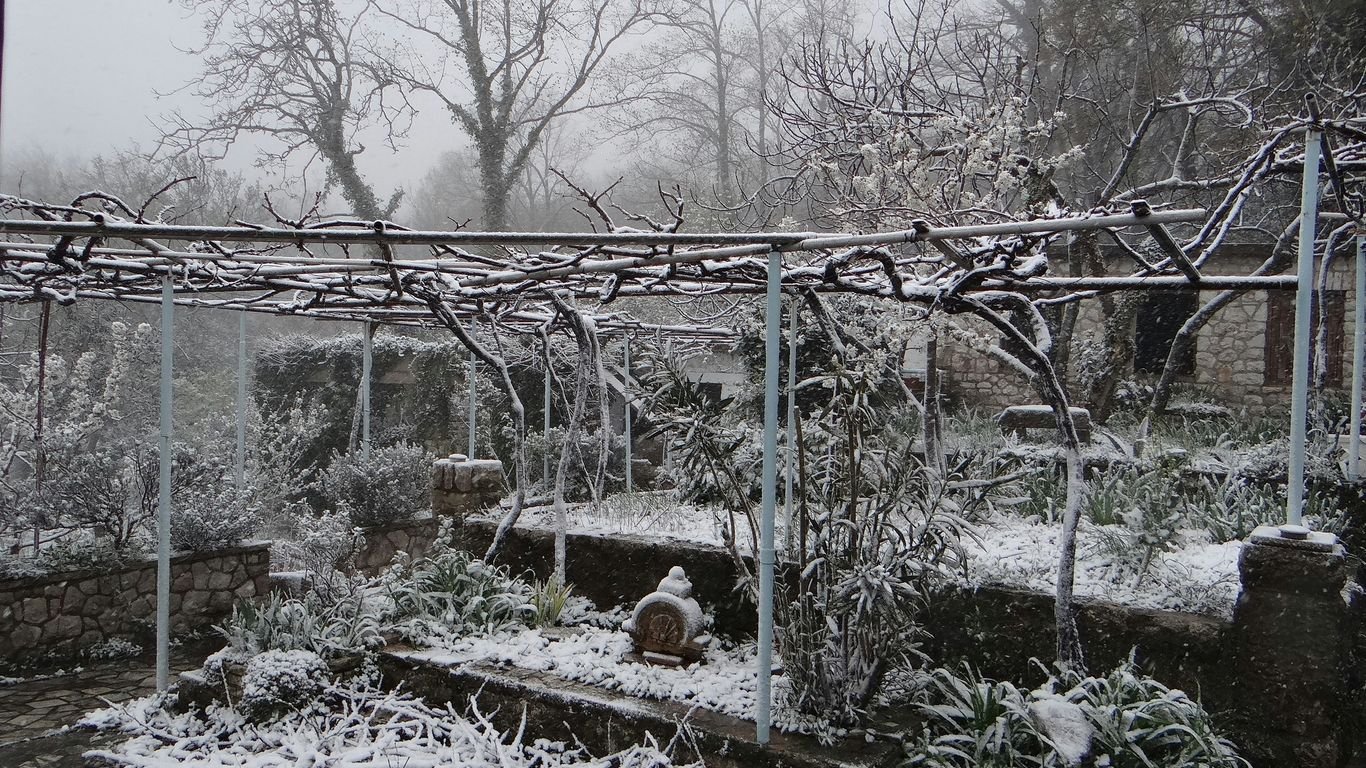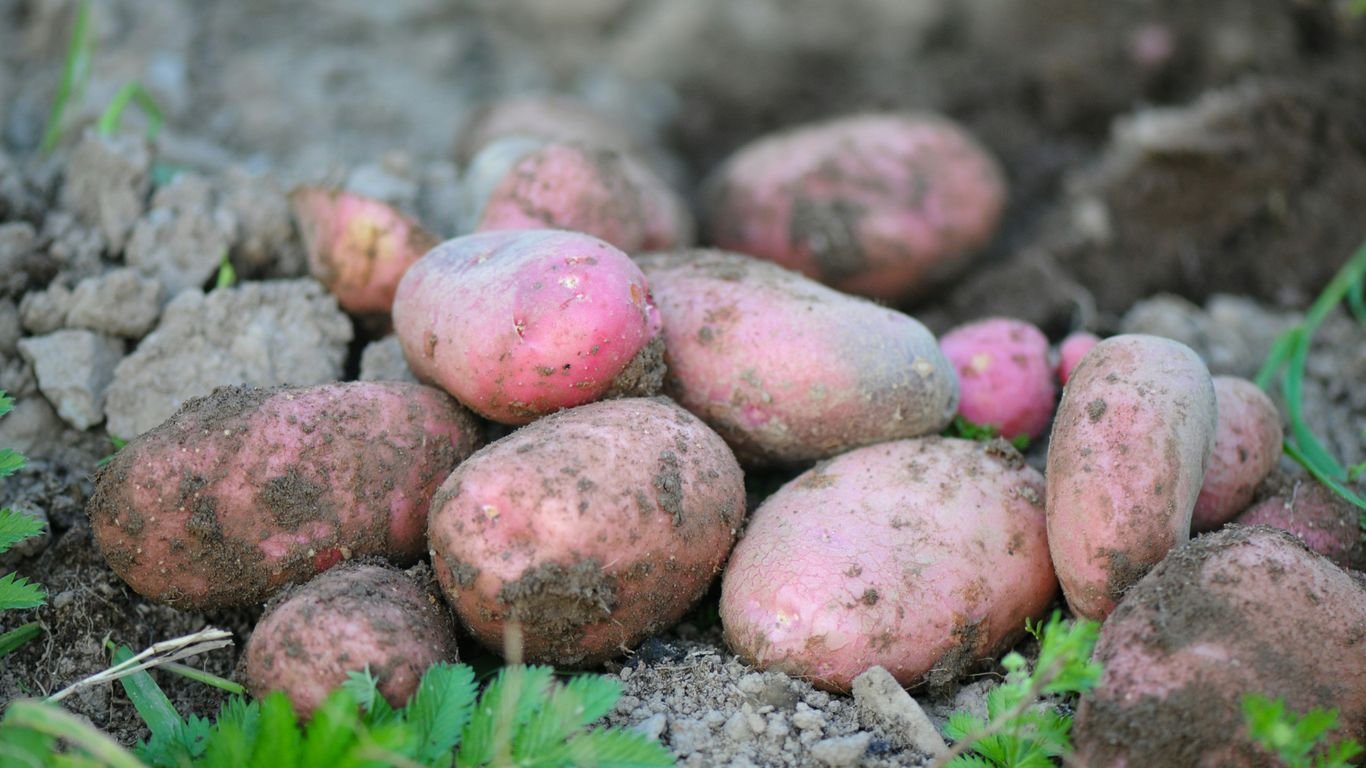Best and Worst Companion Plants for Peppers: A Complete Guide

Growing peppers is super rewarding, right? We love them in our cooking, but sometimes they can be a bit picky about who they share their space with. It turns out, just like us, plants have their best buds and their garden nemeses. We’ve been experimenting with companion planting for our peppers, and let me tell you, it makes a huge difference. It’s all about creating a little neighborhood in the garden where everyone helps each other out, whether that’s by keeping pests away or just making the soil a bit happier. We’re going to walk you through some of our favorite pepper plant pals and a few that we definitely keep at a distance.
Key Takeaways
- Planting basil near peppers is a good idea because it can help keep pests like aphids away and some gardeners swear it makes peppers taste better.
- Onions, garlic, and chives are great because their strong smells can confuse or deter bugs that might want to munch on your peppers.
- Marigolds are like little garden superheroes; they’re known for fighting off tiny worms in the soil called nematodes and also deterring whiteflies.
- While tomatoes share similar needs with peppers, it’s important to give them enough space and switch up where you plant them each year to avoid problems.
- We should avoid planting fennel, brassicas (like cabbage and broccoli), and beans too close to peppers because they can either stunt growth, compete for food, or cause other issues.
Why Companion Planting Matters For Peppers

When we’re growing peppers, it’s easy to get caught up in just the peppers themselves. But just like us, plants do better when they have good neighbors. Companion planting is all about setting up your garden so that different plants help each other out. It’s not just some old wives’ tale; there’s real benefit to thinking about what goes where.
Boosting Pepper Harvests Naturally
We all want more peppers, right? Well, some plants can actually help your pepper plants grow bigger and produce more. They might do this by improving the soil around them, making sure the peppers get enough nutrients, or even by providing a bit of shade during the hottest part of the day. It’s like giving your peppers a little boost without any extra fertilizer.
Creating A Resilient Garden Ecosystem
Think of your garden as a little community. When you have a variety of plants living together, the whole system becomes stronger. Some plants can help keep the soil healthy, while others might attract bugs that eat the pests bothering your peppers. This mix makes your garden less likely to be wiped out by a single problem, whether it’s a pest outbreak or a disease.
Attracting Beneficial Insects And Pollinators
This is a big one for peppers. Certain flowers and herbs we plant nearby act like a welcome mat for good bugs. We’re talking about ladybugs that munch on aphids or bees that help pollinate your pepper flowers, leading to more fruit. It’s a natural way to get help with pest control and fruit production, all by planting the right things next to your peppers. A healthy garden ecosystem is a productive garden.
The Best Pepper Plant Pals

When we’re planning our pepper patch, picking the right neighbors is almost as important as picking the right pepper varieties. It’s not just about making the garden look pretty; it’s about creating a little ecosystem where everyone helps each other out. Good companions can mean fewer pests, more pollinators buzzing around, and ultimately, a much better harvest for us. We’ve found that a little strategic planting goes a long way in keeping our peppers happy and healthy.
Basil: The Flavor Enhancer And Pest Repeller
Basil is a superstar in the garden, and not just because it smells amazing and tastes great with peppers. This herb is known to help keep pesky insects like aphids, mosquitoes, and thrips away from our pepper plants. Plus, its flowers are a magnet for beneficial insects and pollinators. We like to scatter basil plants throughout our pepper beds. For an extra boost of fragrance and pest-repelling power, we sometimes gently crush a few leaves now and then. Trying different basil varieties, like lemon or cinnamon, can add a fun twist too!
Onions, Garlic, And Chives: Aromatic Defenders
The whole onion family – onions, garlic, and chives – are fantastic for keeping pests at bay. Their strong scents can confuse and deter a whole host of unwanted visitors, from aphids to certain beetles. Because they don’t take up a lot of space and have a relatively shallow root system, they make excellent border plants or can be tucked in between rows of peppers without causing competition. We often plant them around the edges of our pepper beds.
Carrots: Loosening Soil And Vertical Growers
Carrots might seem like an odd choice, but they actually do a great job alongside peppers. As their roots grow down, they help break up and loosen the soil. This is great for pepper roots, which appreciate well-aerated soil. Plus, carrots grow vertically and don’t really compete with peppers for sunlight or space, making them efficient use of the garden area.
Spinach And Lettuce: Living Mulch Masters
Spinach and lettuce are wonderful for peppers, especially during the hotter months. They act like a living mulch, their leaves shading the soil. This helps keep moisture in the ground, which is a big win for peppers that can get stressed in dry conditions. They grow quickly and are usually harvested before the peppers get too big, so they don’t end up crowding them out.
Flowering Friends For Your Peppers
Sometimes, the best helpers in the garden aren’t other vegetables, but a splash of color from some flowering plants. We’ve found that adding certain flowers can really make a difference for our pepper plants, not just by looking pretty, but by actively working to keep pests away and bringing in the good bugs.
Marigolds: Nematode and Whitefly Nemesis
Marigolds are practically a garden superhero for peppers. Their roots actually release a chemical that messes with nematodes, those tiny, harmful worms that can live in the soil and damage pepper roots. Plus, their bright flowers seem to deter whiteflies, which can be a real nuisance. We like to plant them right around the base of our pepper plants or scatter them throughout the garden beds. They’re tough, bloom for a long time, and give us a lot of bang for our buck.
Alyssum: Tiny Flowers, Big Benefits
Don’t let their small size fool you; sweet alyssum is a powerhouse companion. These little plants produce a carpet of tiny, fragrant flowers that are magnets for beneficial insects like hoverflies and tiny pirate bugs. These little guys are voracious eaters of aphids and other small pests that might try to munch on our peppers. Alyssum is also super easy to grow, often self-seeding, so once you plant it, you’ll likely have it year after year. It’s a low-growing plant, so it won’t shade out your peppers either.
Nasturtiums: The Trap Crop Extraordinaire
Nasturtiums are one of those plants that do double duty. Not only do their vibrant flowers and peppery leaves add a bit of flair (and are even edible in salads!), but they also act as a ‘trap crop.’ This means they attract certain pests, like aphids and flea beetles, away from your precious pepper plants. By luring these pests onto the nasturtiums, we can protect our peppers. We’ve found that if we plant nasturtiums a little distance away from the peppers, the pests tend to go for the nasturtiums first. It’s a simple way to divert trouble.
Here’s a quick look at what these flowering friends bring to the table:
- Marigolds: Repel nematodes and whiteflies.
- Alyssum: Attract hoverflies and pirate bugs that eat aphids.
- Nasturtiums: Act as a trap crop for aphids and flea beetles.
Planting these flowering companions is a straightforward way to boost your pepper’s health and yield without resorting to harsh chemicals. They bring beauty and function right into our vegetable patches.
Tomatoes: A Cautious Camaraderie
So, can we plant tomatoes and peppers together? It’s a question we get asked a lot, and the answer is a bit of a ‘yes, but…’ Both peppers and tomatoes are part of the nightshade family, meaning they have pretty similar needs when it comes to sun, water, and soil. They both love that warm weather and rich soil, which makes them seem like natural buddies.
Shared Needs, Shared Space Concerns
Because they share so many growing requirements, planting them close can work. They’ll both be happy with the same kind of sunny spot and regular watering. Plus, a taller tomato plant can sometimes offer a bit of welcome shade to peppers during the hottest part of the afternoon, which can be a good thing. It’s like they understand each other’s needs on a basic level. However, this closeness also means they can attract the same pests and diseases. If one gets sick, the other is likely to catch it too. We’ve seen this happen – a blight on the tomatoes can quickly spread to the peppers if they’re too close for comfort.
Spacing and Rotation Are Key
To make this pairing work without too much drama, giving them plenty of personal space is super important. We’re talking at least 18-24 inches between plants, maybe even more if you can swing it. This airflow is vital for keeping both plants healthy and reducing the chances of fungal issues. Think of it as giving each plant its own little bubble. Beyond just spacing, we absolutely have to talk about crop rotation. Don’t plant peppers and tomatoes in the exact same spot year after year. Ideally, give that patch of soil at least three years off from nightshades before planting them there again. This helps break the cycle of soil-borne diseases that can linger and affect both crops. It’s a simple step that makes a huge difference in the long run for keeping your garden healthy.
Plants To Keep Away From Peppers

When we’re planning our pepper patch, it’s not just about what we should plant, but also what we shouldn’t. Some plants, despite seeming like good neighbors, can actually cause more trouble than they’re worth for our peppers. They might hog all the nutrients, invite pests we don’t want, or even stunt the growth of our precious peppers. Let’s talk about a few of these troublemakers we should keep our distance from.
Fennel: The Growth Inhibitor
This one’s a bit of a drama queen. Fennel has a reputation for releasing chemicals into the soil that can really mess with pepper plants, slowing down their growth. It’s also known to attract aphids, which is the last thing we need hanging around our peppers. It’s best to give fennel its own little corner of the garden, far away from your peppers.
Brassicas: Nutrient Competitors and Pest Magnets
We’re talking about the broccoli, cauliflower, cabbage, and kale family here. These guys are hungry! They compete with peppers for the same essential nutrients in the soil. On top of that, they can attract pests like flea beetles and cabbage worms, which aren’t picky eaters and might decide your peppers look pretty tasty too. It’s a double whammy of competition and pest attraction that we want to avoid.
Beans and Peas: Nitrogen Overload and Shading
Legumes like beans and peas are famous for fixing nitrogen in the soil, which sounds great, right? Well, for peppers, it can actually be too much of a good thing. They can hog that nitrogen, leaving less for the peppers. Plus, if you’re growing vining varieties, they can grow tall and cast shade over your sun-loving pepper plants, which is definitely not ideal. We want our peppers soaking up that sun, not hiding from it.
Walnut Trees: The Toxic Neighbor
This might seem obvious, but it’s worth mentioning. Walnut trees, especially their roots and fallen leaves, release a substance called juglone. This stuff is toxic to many plants, including peppers. If you have a walnut tree anywhere near your garden, it’s probably best to plant your peppers well away from its drip line, or even in a different part of your yard altogether. Seriously, don’t plant peppers near walnut trees if you can help it.
Here’s a quick rundown:
- Fennel: Inhibits growth and attracts aphids.
- Brassicas (Broccoli, Cabbage, etc.): Nutrient thieves and pest magnets.
- Beans & Peas: Can cause nitrogen imbalance and unwanted shade.
- Walnut Trees: Juglone is a definite no-go for peppers.
Keeping these plants separate from your peppers will help ensure your pepper plants have the best chance to thrive without unnecessary competition or pest problems. It’s all about giving them the space and resources they need to produce those delicious fruits we love.
Practical Tips For Pepper Planting Success
Alright, so we’ve talked about who our pepper plants’ best buddies are and who to keep far away. Now, let’s get down to the nitty-gritty of actually putting this into practice in our gardens. It’s not just about picking the right plants; it’s about where we put them and how we manage our garden space over time.
Strategic Placement Of Your Companions
Think of your garden like a neighborhood. You want to put the friendly neighbors close by and the troublemakers on the other side of town, or at least, a different part of the yard. For our pepper pals, this means placing those beneficial plants right where they can do the most good. For instance, tucking basil or marigolds around the base of your pepper plants is a classic move. They’re like little bodyguards, offering protection without taking up too much extra room. Similarly, planting rows of onions or chives alongside your peppers can create a fragrant barrier against common pests. We’ve found that scattering these aromatic defenders throughout the pepper patch really helps.
- Basil: Plant it close, even right in the same hole if you’re feeling brave, or just around the base. It loves the same conditions and offers pest protection.
- Onions, Garlic, Chives: Use these as border plants or intersperse them between pepper rows. Their strong smells are a great deterrent.
- Marigolds & Alyssum: These cheerful flowers are fantastic for planting around the edges of your pepper beds. They attract good bugs and deter bad ones.
- Spinach & Lettuce: Use these as a living mulch. Plant them around your peppers early in the season. They’ll help keep the soil cool and moist, and you get to harvest them before the peppers get too big.
Container Gardening Considerations
If you’re growing peppers in pots, which a lot of us do, companion planting can still work wonders. The key here is to choose smaller, less competitive plants that won’t hog all the water and nutrients. Think about a nice big pot for your pepper plant, and then tucking some smaller herbs like thyme or oregano around the edges. You could also plant a few marigold seedlings in the same container. Just make sure not to overcrowd the pot; your pepper plant still needs plenty of space to breathe and grow. We’ve seen great success with a single pepper plant surrounded by a few sprigs of basil or a small alyssum plant in a large container.
Crop Rotation For Long-Term Health
This is super important, even if you’re not strictly doing companion planting. Crop rotation is basically about not planting the same thing in the same spot year after year. Peppers, like tomatoes, can be prone to certain soil-borne diseases. If you plant peppers in the same soil every single year, those diseases can build up. So, even if you have your favorite spot for peppers, try to move them to a different area of the garden each season. This helps break the disease cycle and keeps your soil healthier in the long run. A simple rotation plan might look like this:
- Year 1: Peppers in Bed A
- Year 2: Beans or root vegetables in Bed A
- Year 3: Leafy greens (like spinach or lettuce) in Bed A
- Year 4: Back to peppers in Bed A, or move to Bed B and start the cycle over.
Remember, companion planting and crop rotation work hand-in-hand. They are both strategies to create a more balanced and resilient garden ecosystem. By thinking about plant relationships and soil health, we can significantly improve our chances of a bountiful pepper harvest year after year.
It might seem like a lot to keep track of, but honestly, once you get into the rhythm, it becomes second nature. And the results? Totally worth it.
Wrapping It Up: Your Pepper Patch Pals
So, we’ve gone through a bunch of plants that can be great buddies for your peppers, and some that are best kept far away. It’s pretty cool how a little planning can make a big difference in your garden, right? By picking the right neighbors, like basil or marigolds, we can help keep the bad bugs away and maybe even get better tasting peppers. And by avoiding the troublemakers, like fennel or those big brassica plants, we give our peppers a better chance to grow strong. It’s not rocket science, just smart gardening. We hope this guide helps you create a happy, healthy pepper patch this season. Happy growing!
Frequently Asked Questions
What exactly is companion planting for peppers?
Companion planting is like choosing good roommates for our pepper plants. We plant different kinds of veggies, herbs, and flowers close together because they help each other out. Some plants might scare away bugs that bother peppers, while others might attract helpful insects that eat the bad ones. It’s all about creating a happy neighborhood in our garden where everyone benefits.
Why should we bother with companion planting for peppers?
Think of it as giving our peppers a little boost! Good neighbors can help keep nasty pests away naturally, meaning fewer problems for us and healthier plants. Some companions also bring in pollinators like bees, which are super important for getting lots of peppers. Plus, by planting smart, we can even make our garden space work better and grow more food.
What are the absolute best friends for our pepper plants?
We’ve found that herbs like basil and chives are fantastic. Basil seems to make peppers taste better and keeps some bugs away. Onions and garlic have strong smells that confuse pests. Flowers like marigolds are amazing because they can stop tiny worms in the soil that harm peppers. Even some leafy greens like spinach can act like a living blanket to keep the soil moist.
Are there any plants that peppers really don’t get along with?
Yes, some plants are definitely not good neighbors. Fennel is a big no-no because it can actually stop peppers from growing well. Plants like broccoli, cabbage, and kale (we call them brassicas) are super hungry and will compete with peppers for food in the soil. We also try to keep beans and peas a bit separate, as they can either give the soil too much nitrogen or shade out the peppers.
Can we plant flowers near our peppers, and if so, which ones?
Absolutely! Flowers can be wonderful companions. Marigolds are famous for deterring bad bugs and soil worms. Sweet alyssum has tiny flowers that attract beneficial insects. Nasturtiums are cool because they act like a ‘trap crop’ – bugs love them so much they leave the peppers alone! These colorful additions make our gardens pretty and productive.
How close should we plant these companion plants to our peppers?
It depends on the companion! Smaller, low-growing plants like basil or chives can be tucked in fairly close, maybe 6 to 12 inches away from the pepper stem. For bigger plants like marigolds or even tomatoes (which need caution), we give them more space, around 18 to 24 inches, so they don’t block the sun or fight for root space. The main thing is to avoid crowding, which can lead to dampness and sickness.






